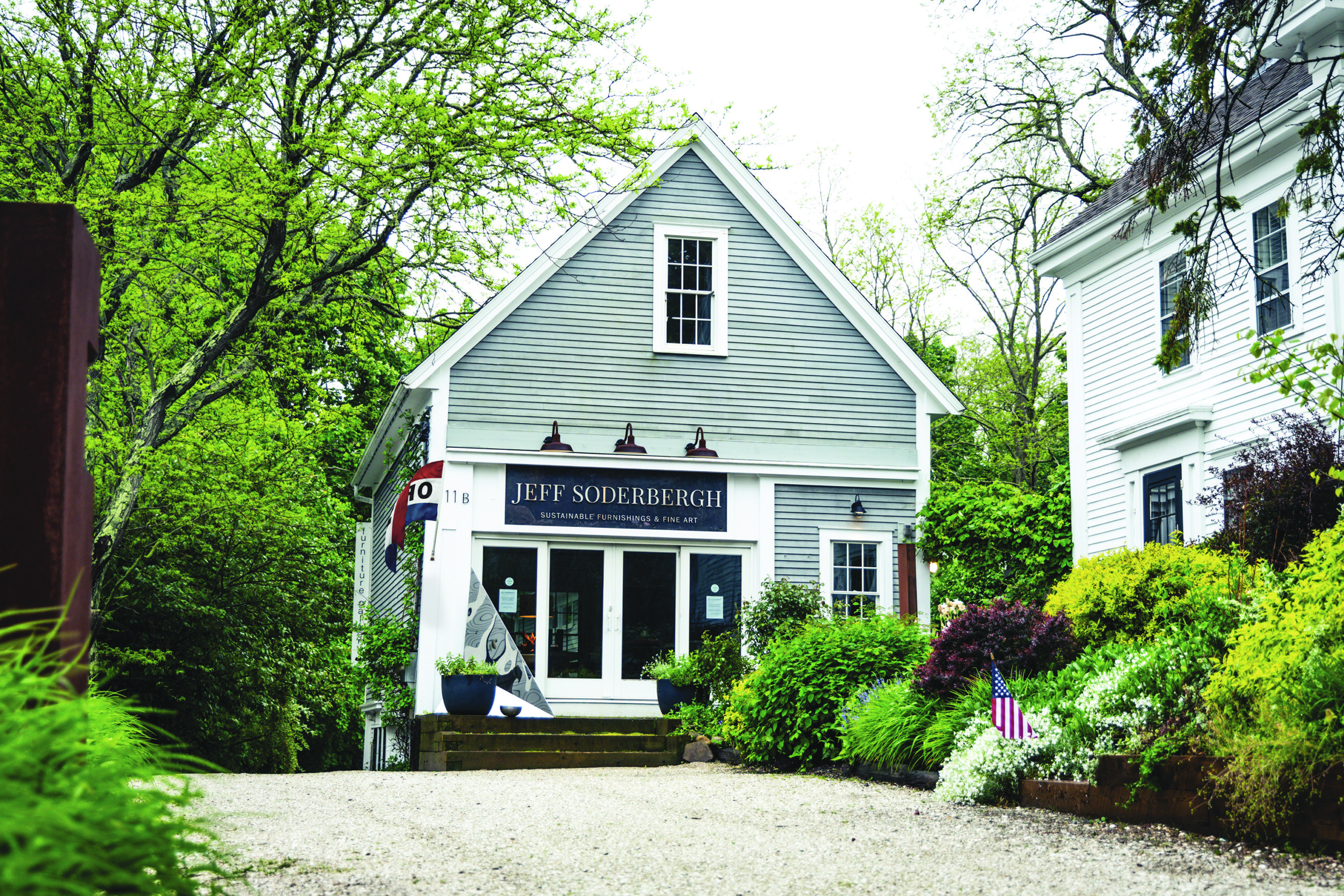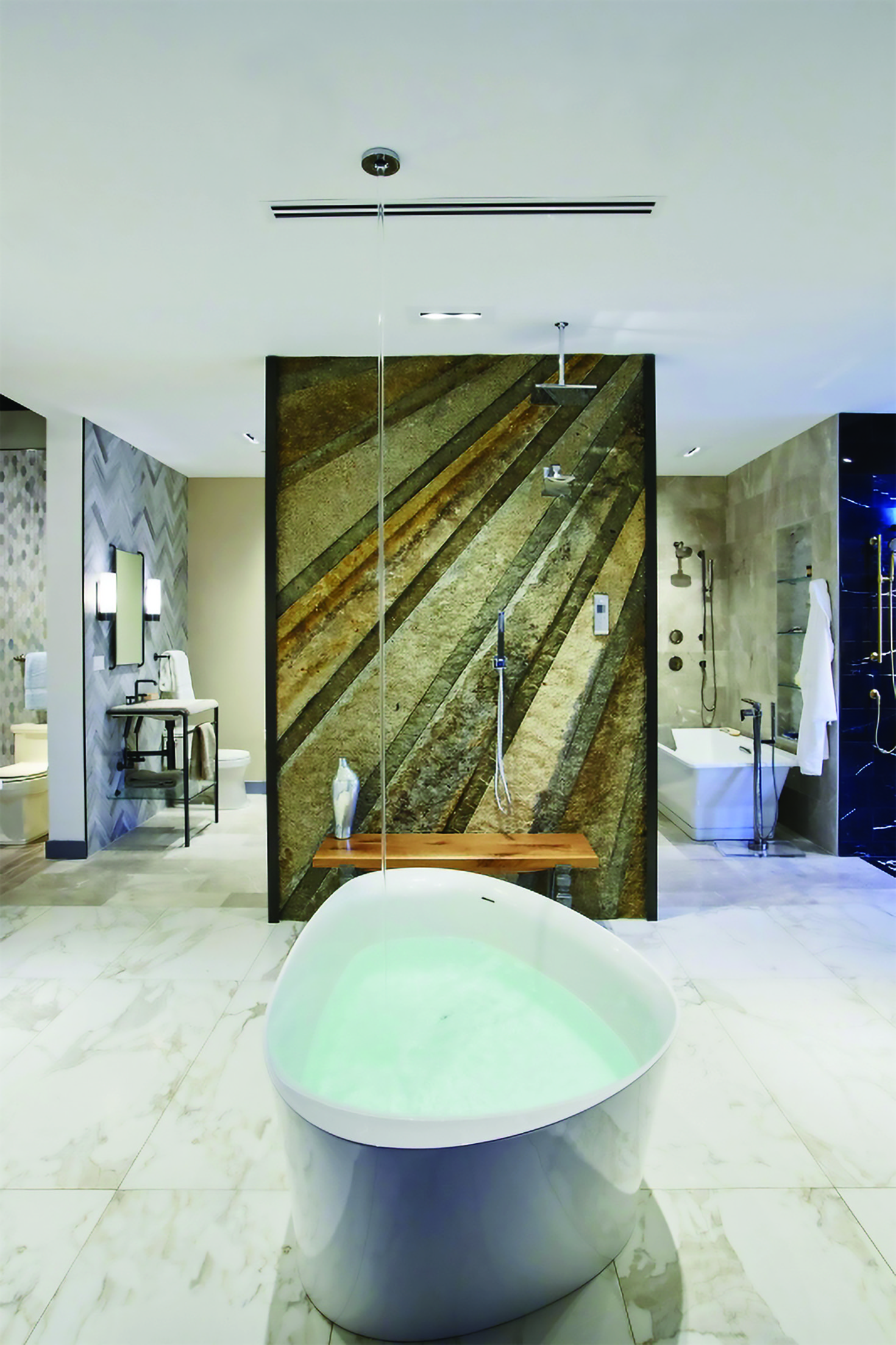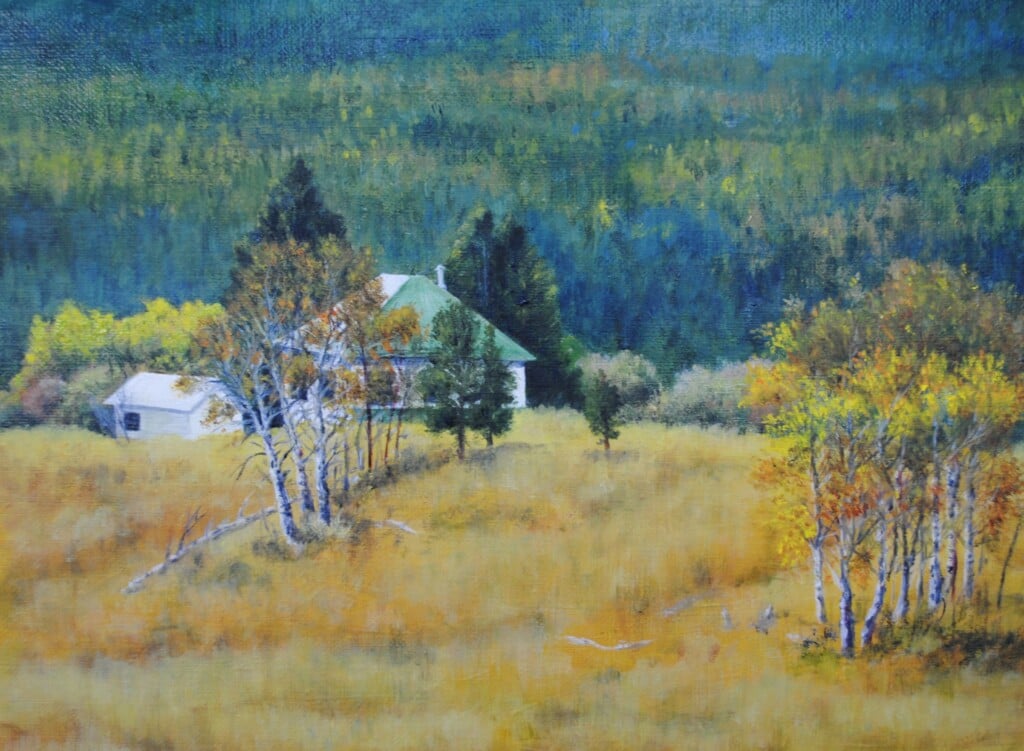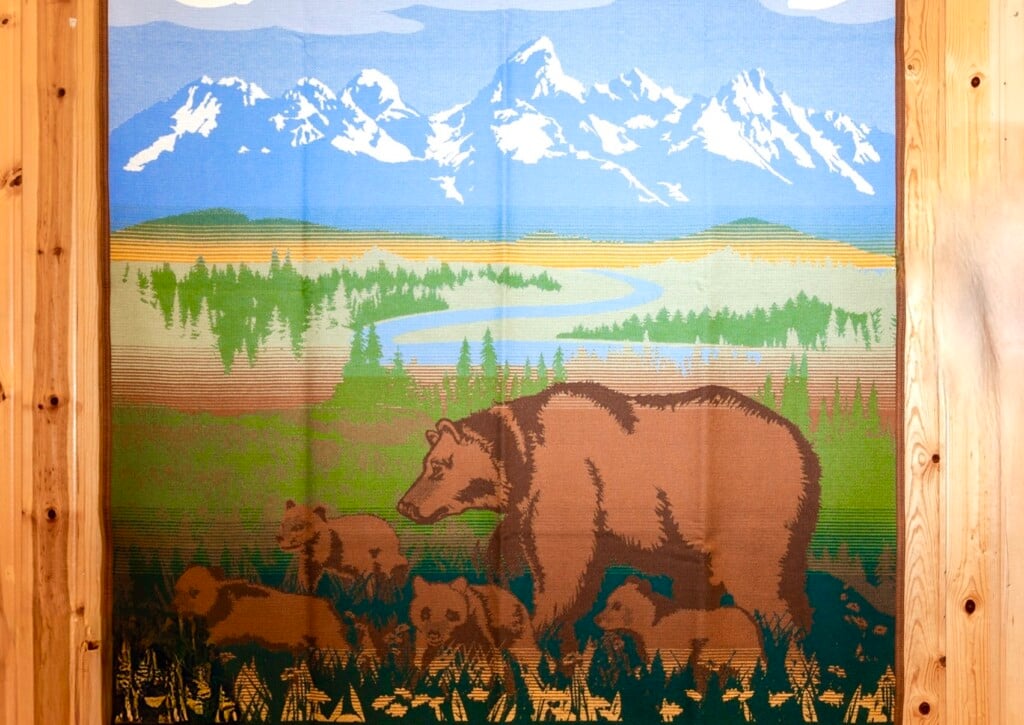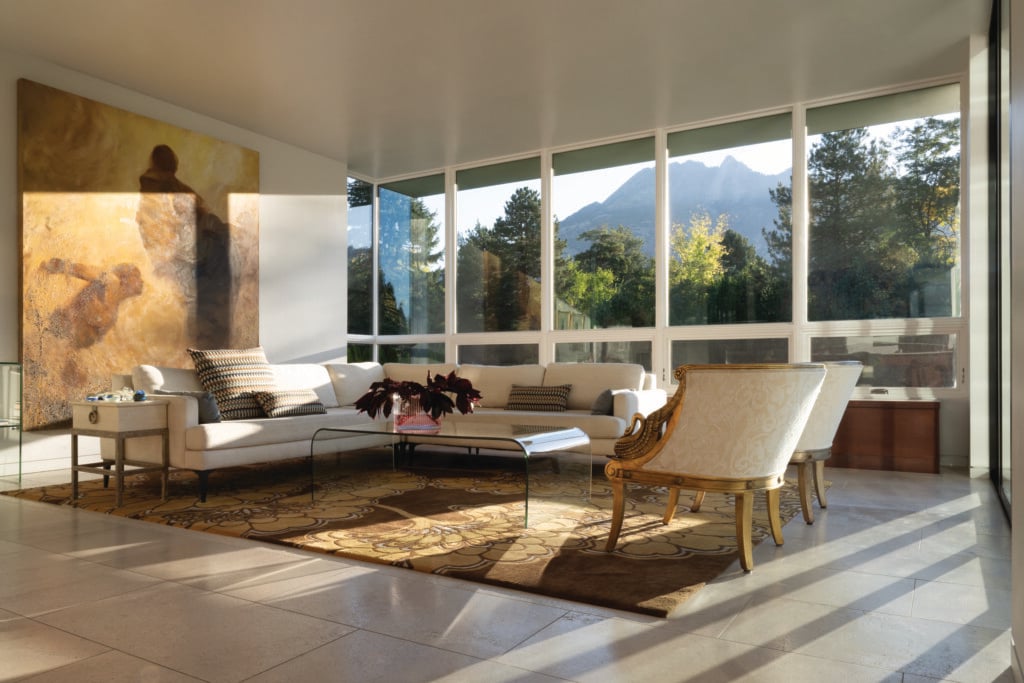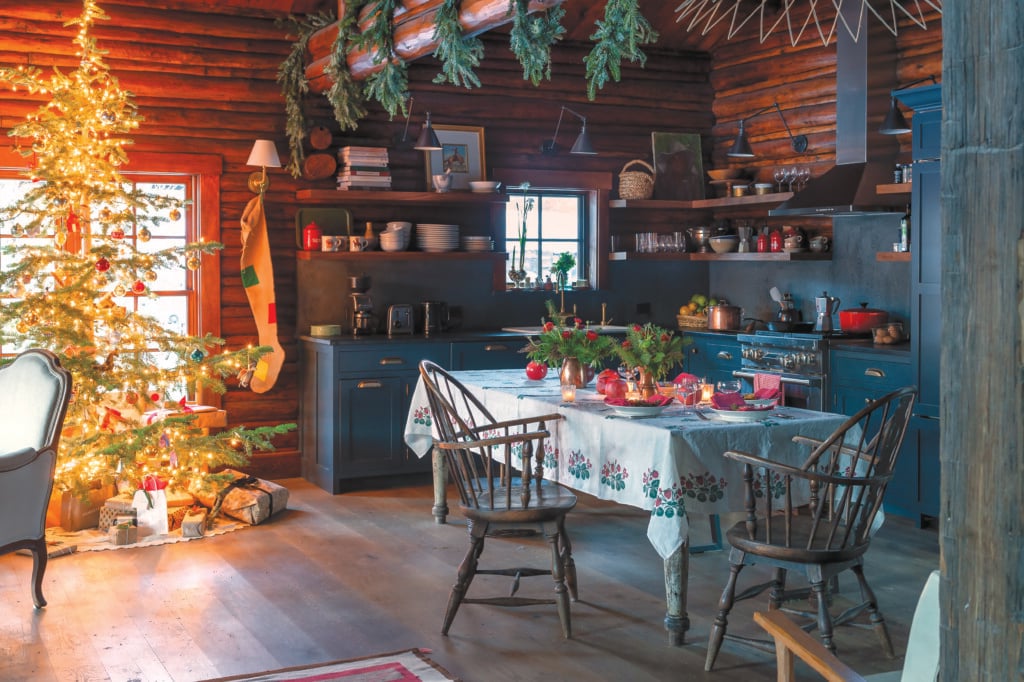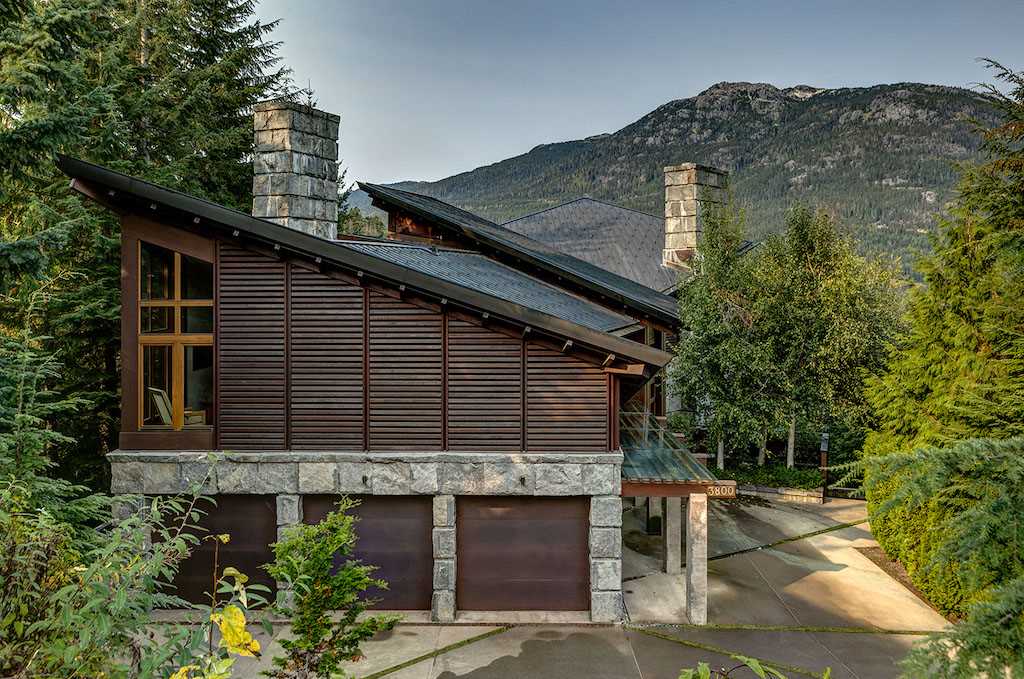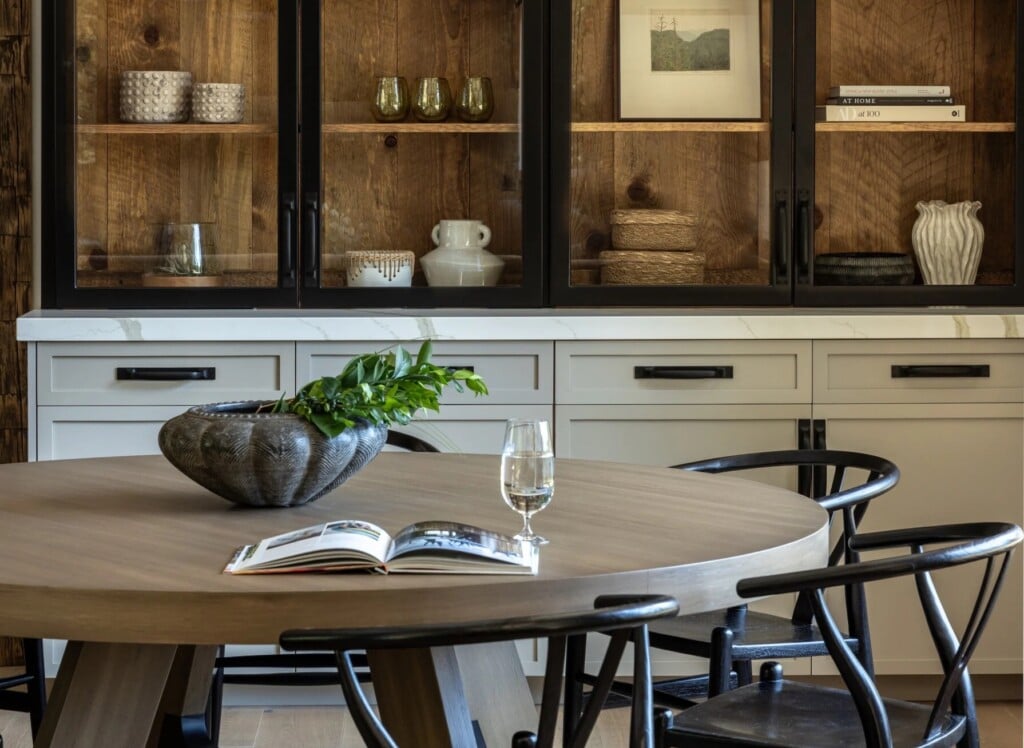A Sustainable Approach to Crafting Elegant Wood Furnishings and Fine Art
Jeff Soderbergh creates heirloom-quality furniture and artwork from reclaimed materials.
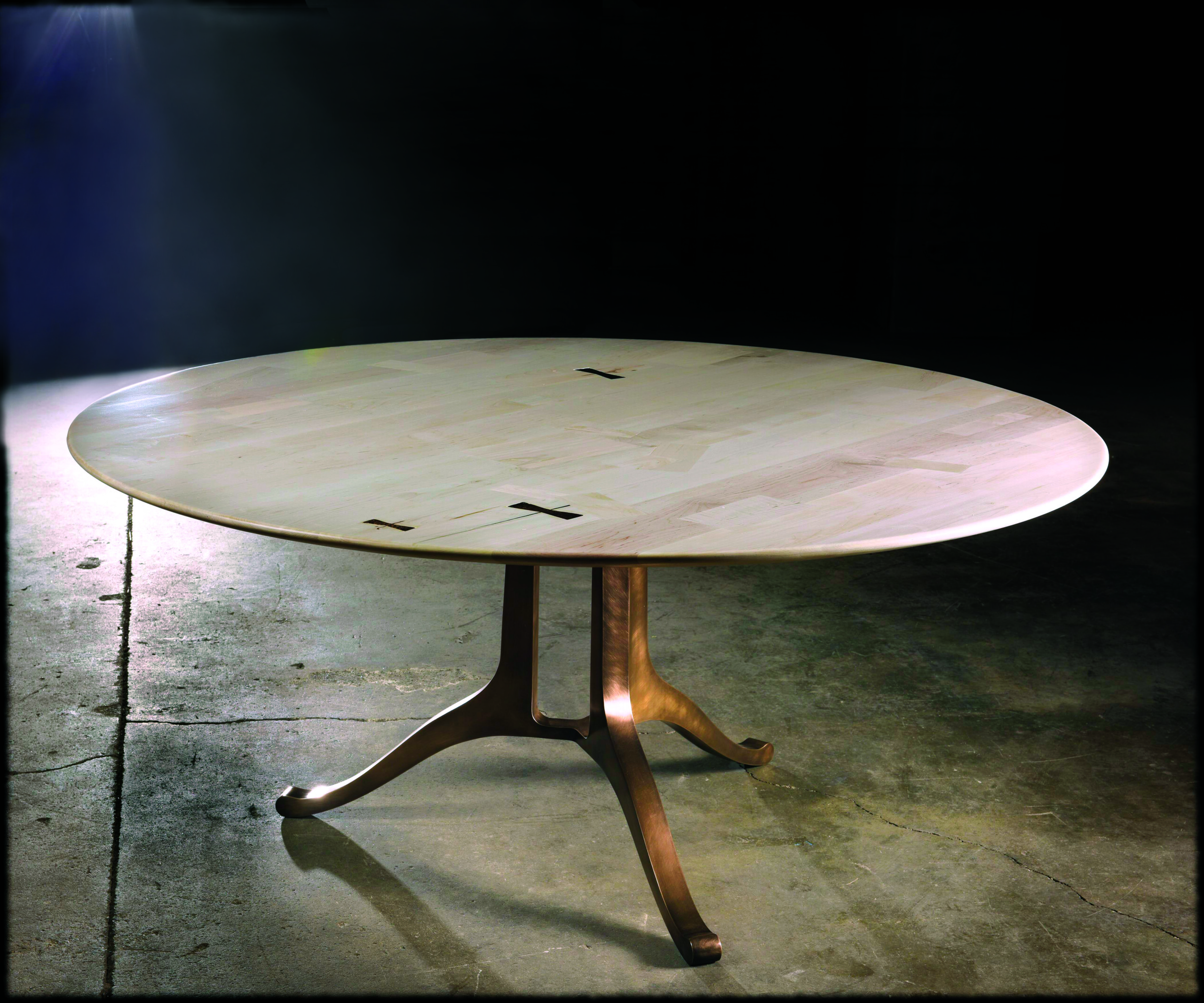
This signature Soderbergh piece is made from 65 slices of sugar maple layered together to form a table. Three hand hammered bronze butterflies reference an ancient technique for reinforcing cracks and weak joints. | Photo: David Hansen
Looking at Jeff Soderbergh’s work, “salvaged” isn’t the first word that comes to mind. “Elegant” better describes the clean designs and gorgeous wood on display in his pieces, but each one is made entirely from reclaimed materials. It’s the cornerstone of Soderbergh’s practice. Every ingredient has a heritage, adding layers of meaning, whether it spent its first life as a church pew or in the hull of a ship.
“Reclaimed” doesn’t mean substandard. Far from it: Soderbergh uses only the highest-quality wood, stone and metal. In sourcing his materials, he has spent decades building a network, including contractors who deconstruct houses and sawyers who process windfall trees. “I’ve found people who are dismantling buildings, who are collecting things, who are low-impact on the world,” says Soderbergh. He now has a warehouse full of salvaged material to use not only for his own inspiration but also as a resource for others.
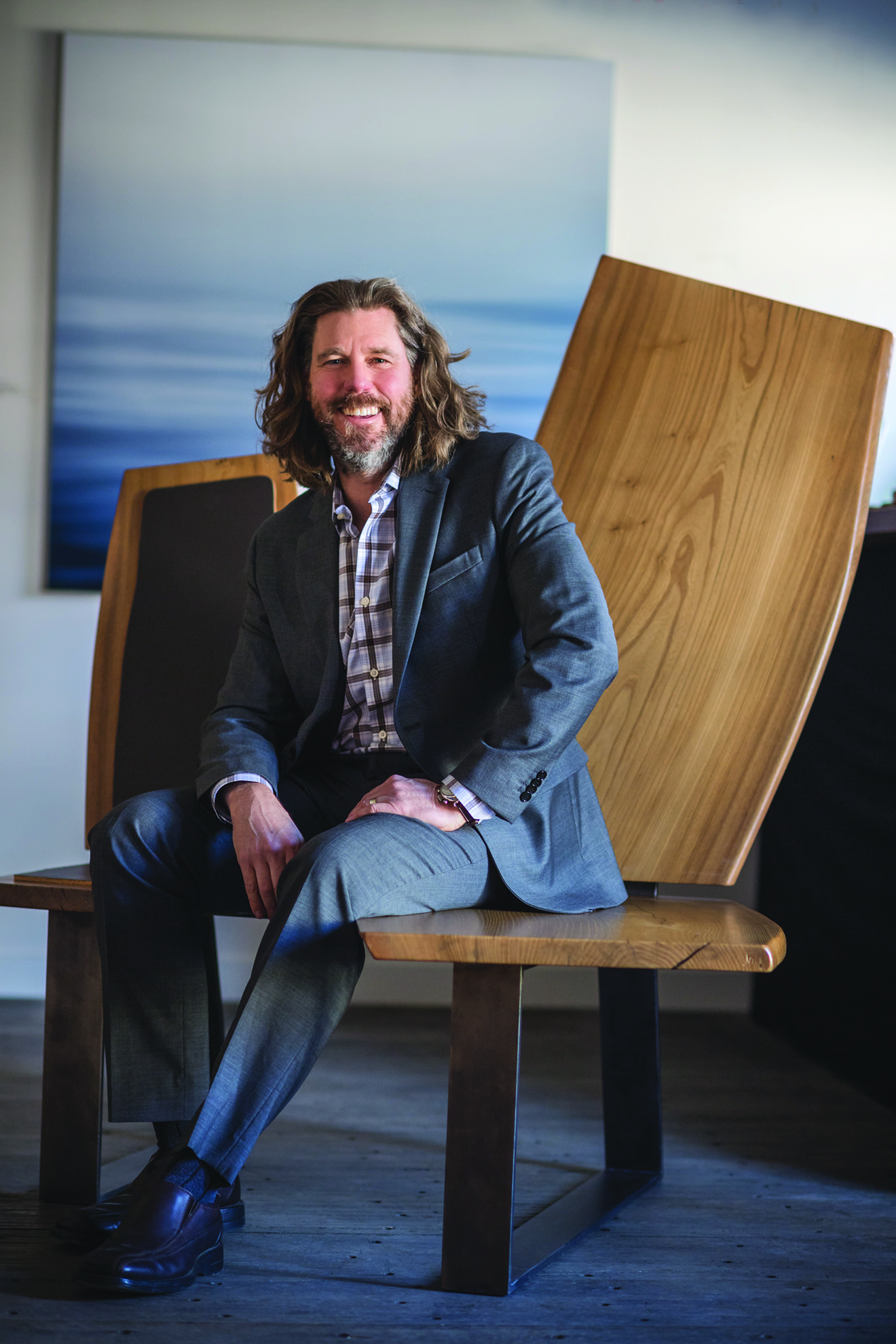
Soderbergh sits in a sculptural chair. A collaboration with Hutker Architects, it was made from a tree with two trunks. | Photo: Erik Levin
“I want to be a solution for architects and designers with great ideas,” he says. “I love being able to say, ‘I have something perfect for that.’” Soderbergh found his knack for salvaging in the early 1990s as a sculptor. Fresh out of college with an anthropology degree, he was interested in the stories of materials and needed affordable supplies. The detritus from decommissioned buildings fit the bill. “I was working with a lot of decorative molding, columns, carved corbels,” he says. “Once, I found an industrial boiler with intricately engraved flowers.
They were throwing out pieces of history.” Rather than abandon those pieces of artisanry to a landfill, Soderbergh reshapes them into something new—adding another hundred years to their lifespan. Soderbergh’s affinity for the stories of beautiful utilitarian objects led him away from pure sculpture and toward furniture. “I wanted to build pieces for homes,” he says, “pieces that people would interact with every day.”
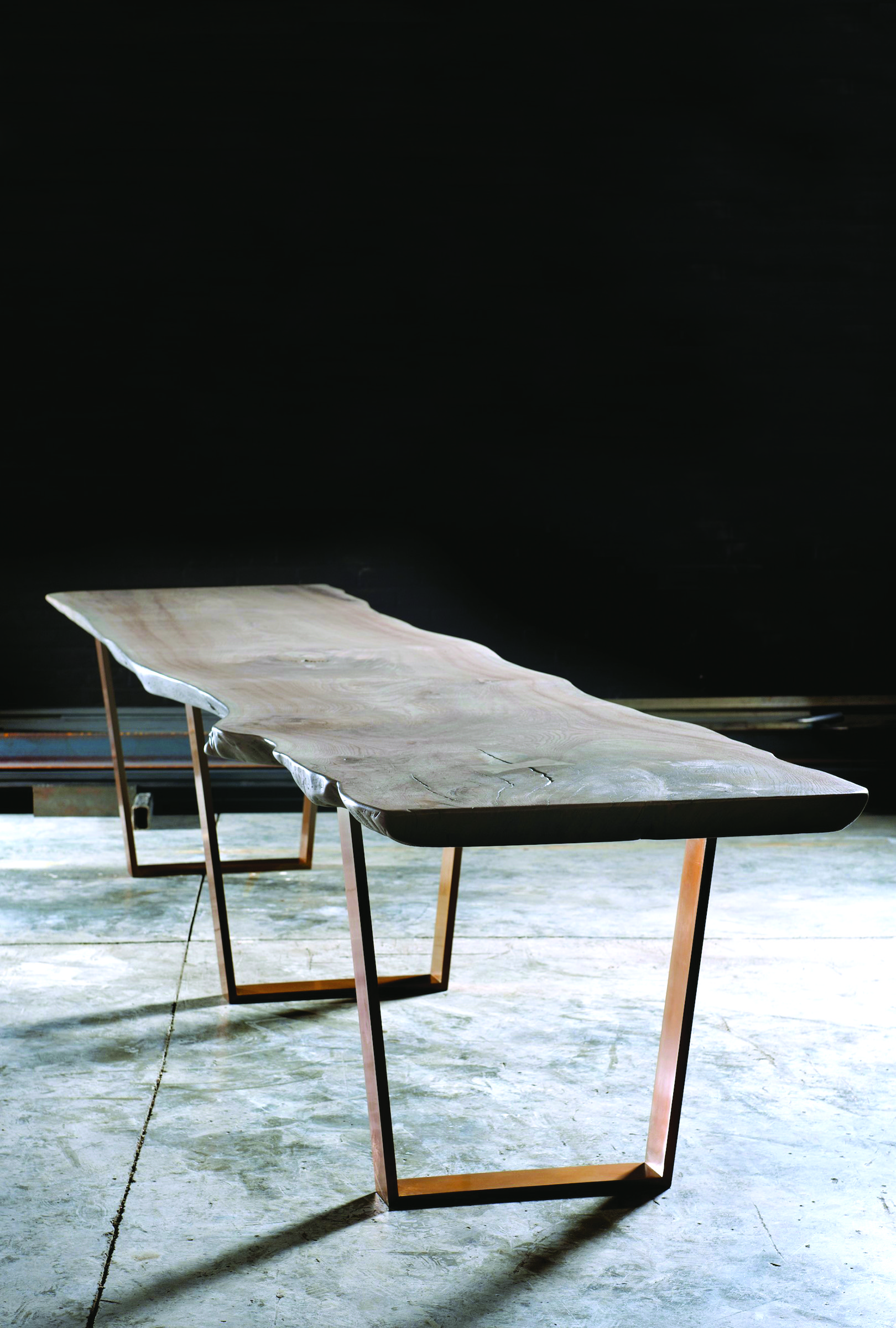
Sixteen feet of reclaimed elm found a new home as the display table in the Tommy Bahama flagship Manhattan location. | Photo: David Hansen
With no formal background in woodworking or design, he spent his 20s and mid-30s teaching himself and showing in trade shows before opening his first studio in 1999. Today, his company, Jeff Soderbergh Sustainable Furnishings & Fine Art, has four branches: his furniture and artwork, the salvage warehouse, two galleries and a consultation side of the business. He employs 10 people and works closely with his wife, Natasha, who oversees the galleries and consultation business. They work with homeowners, designers and architects across the country including installations in the Mountain West.
In Jackson, Wyoming, The Cloudveil—a boutique hotel known for its collection of art and artisan-made furnishings— boasts beautiful white oak beams Soderbergh salvaged from a circa-1880s dairy farm in Laramie, Wyoming. Soderbergh can produce anything a client dreams up, but tables are his specialty. Warm and rustic or sleek and modern, a good table is more than four legs and a flat surface.
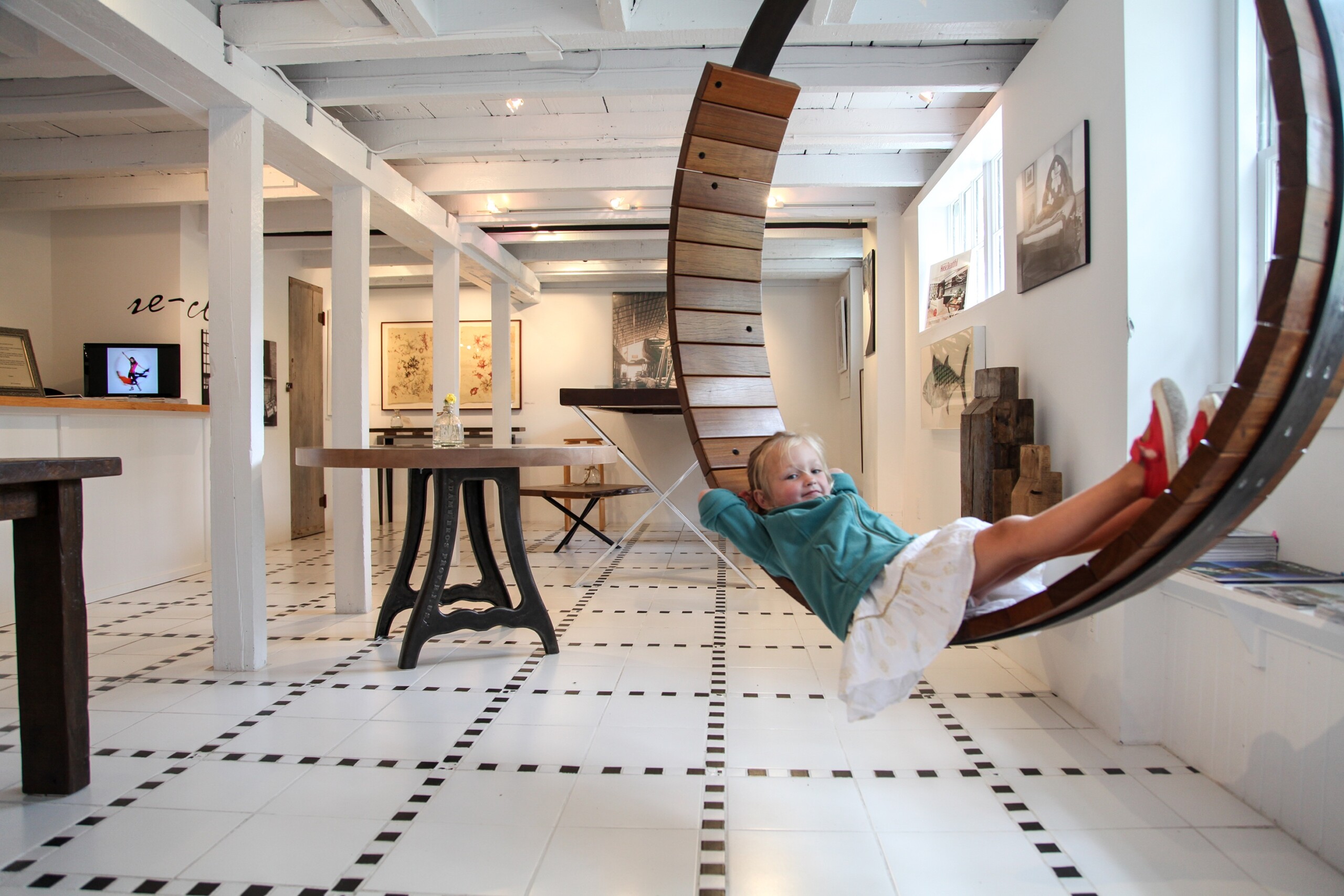
This ring chair is made from decommissioned pieces of the Coney Island boardwalk. Harvested in the early 1900s, the wood began life as old-growth Amazon trees. | Photo: Maaike Bernstrom
“The language of tables is the language of function,” says Soderbergh. “If it’s doing its job, it’s seamless. You don’t notice it’s working. You enjoy the dinner or the people.” Those everyday moments spent around tables add up to lives—discussing ideas, doing homework, arguing, sharing food. The legacy of Soderbergh’s craftsmanship will unfold over generations around heirloom tables made from shuttered factories and dismantled barns. “The materials are already here,” he says. “We don’t have to manufacture them or belch smoke into the air. It’s all right here, and it’s stunning.”
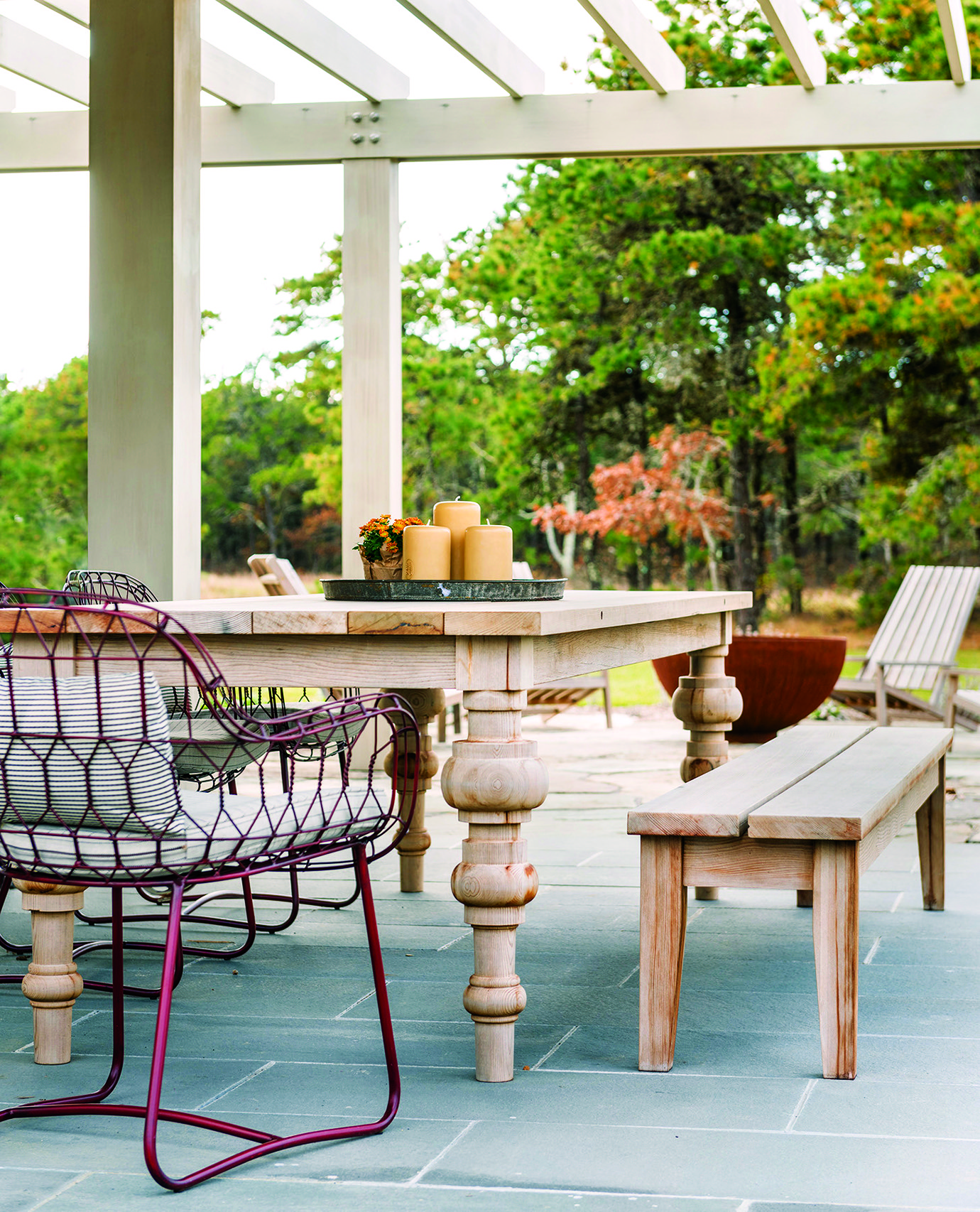
A dining table and matching bench of redwood from a late-1800s San Francisco railroad. | Photo: Nat Rea
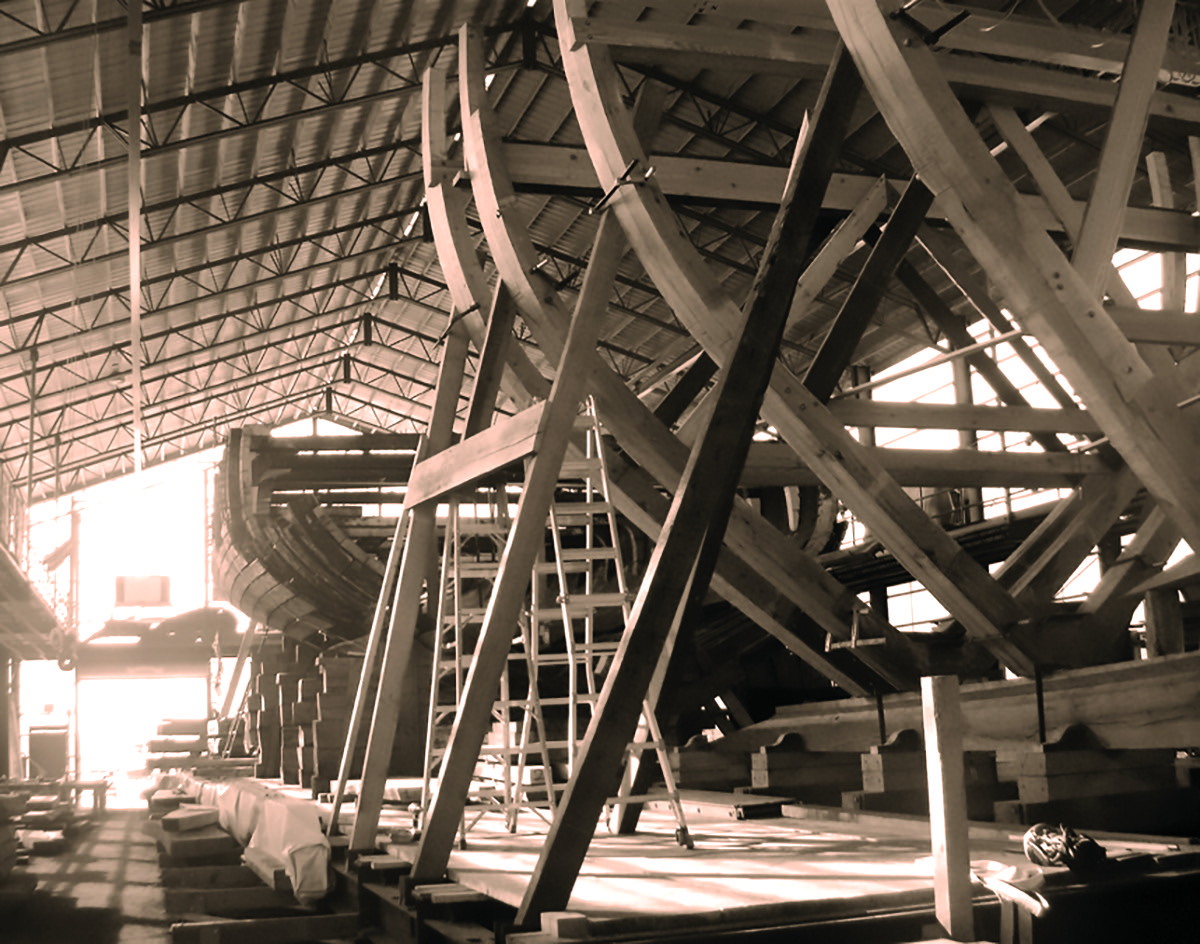
The 2010 restoration of Coronet, one of the first private racing schooner yachts ever built, from which Soderbergh salvaged one-third of the boat, including the keel. | Photo: Jeff Soderbergh
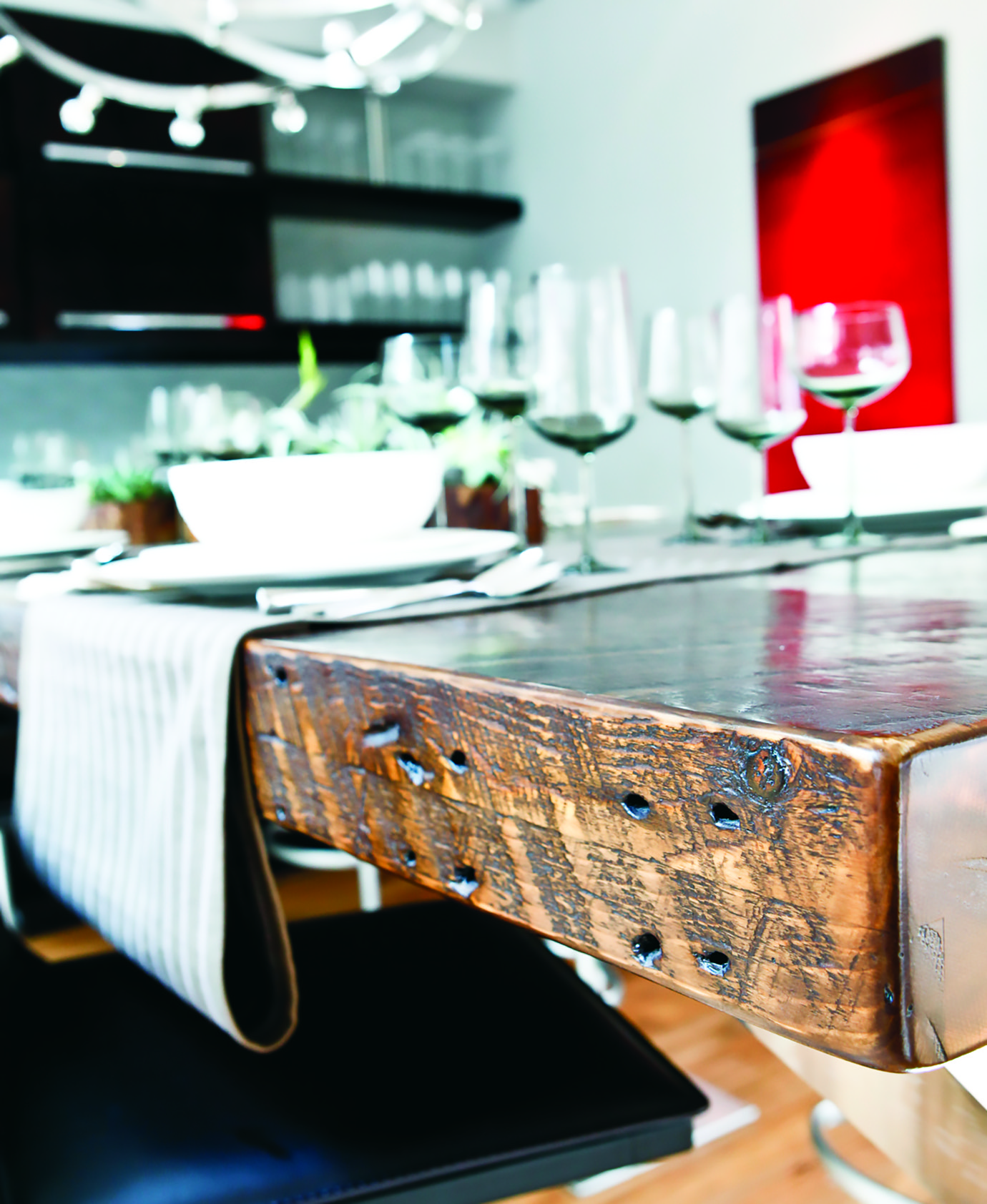
A walnut table reclaimed from the renovation of the Vanderbilt horse stable, with exposed nail holes and saw marks. | Photo: Jeff Soderbergh


